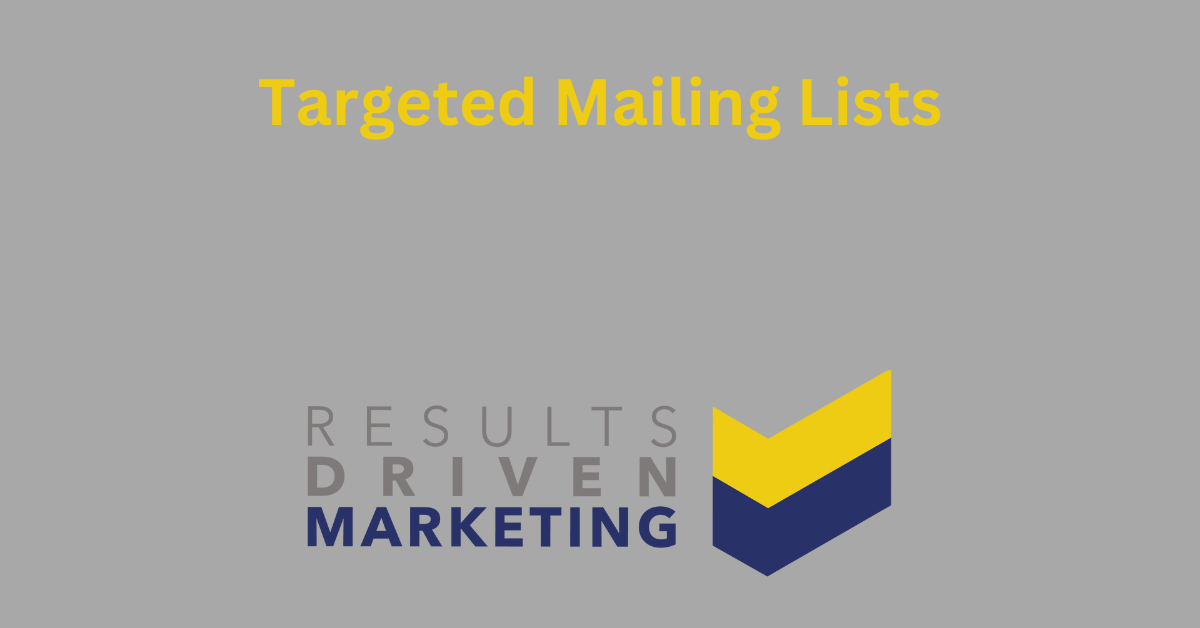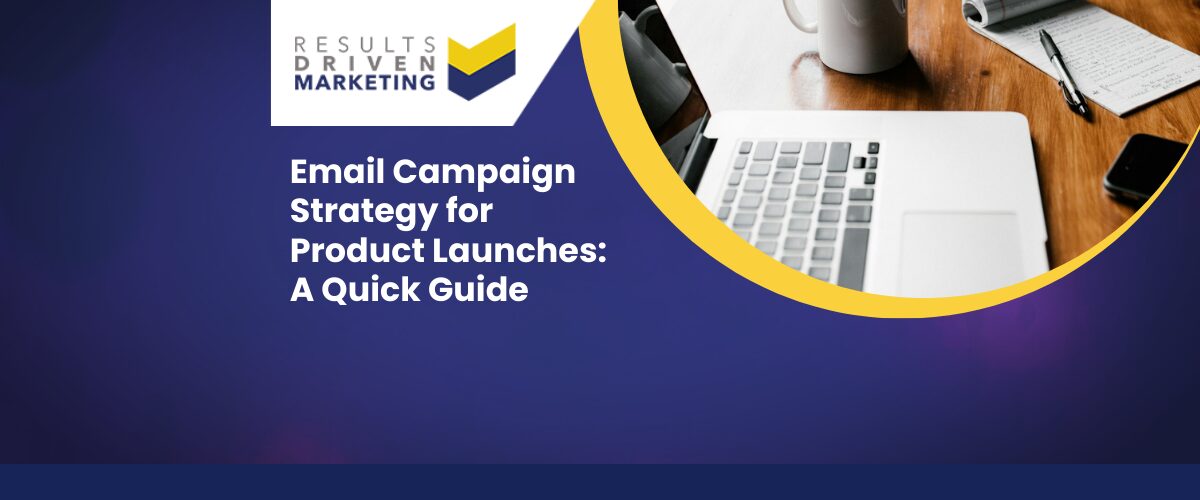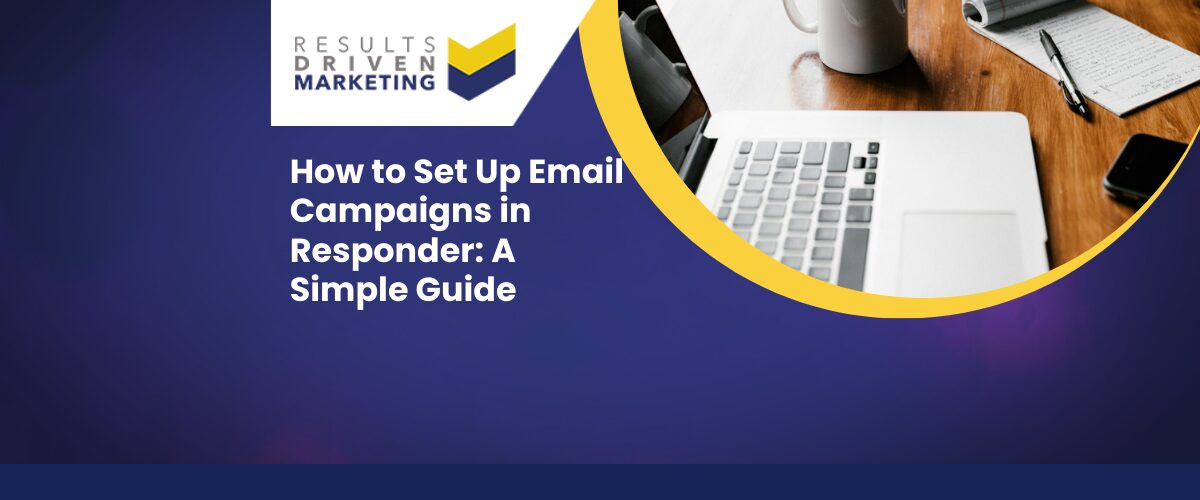
Targeted Mailing Lists | The Ultimate Guide
Looking to expand your email marketing strategy? Well, it’s time to talk about the elephant in the room – buying targeted mailing lists.
While it may have a negative connotation, buying a list can be valuable to business owners and marketers who are looking to find and target new audiences.
But we’re not just here to talk about buying lists, we’re here to talk about how to use these bought lists to get potential customers to fill out the contact us form on your website and speak to one of your expert advisers.
Contact our mailing list experts to help you make the most out of your bought mailing list and drive more sales and engagement for your business.
So, here are some tips and tricks to help you make the most out of your bought mailing list.
Use specific and targeted mailing lists
First and foremost, it’s essential to choose a specific and targeted list.
Don’t just purchase a massive mailing list and hope you’ll get a few sign-ups.
Do some research and purchase a list that is specific to your target audience.
For example, if you are a fitness trainer, consider purchasing a list that includes people interested in physical health and fitness.
Also, keep in mind that not everyone on your list will be interested in your offerings.
Instead of sending out a mass email to all contacts, segment your list based on the interests and behaviours of your subscribers.
This allows you to create targeted messages that are more likely to resonate with each group.
It’s also crucial to keep your list clean and up-to-date.
Regularly remove inactive or bounced email addresses, and avoid sending emails to people who have unsubscribed from your list.
This will not only improve your email deliverability but also prevent you from wasting time and resources on uninterested subscribers.
Finally, don’t forget to personalise your emails.
Address subscribers by name, and use dynamic content to tailor your message to their interests or behaviour.
This creates a more engaging and relevant experience for your subscribers and increases your chances of driving conversions.
Contact our mailing list experts to help you make the most out of your bought mailing list and drive more sales and engagement for your business.
Personalise your outreach to targeted mailing lists
Personalisation in email campaigns is key. Address your customers by name and tailor the content of the email to their interests.
You’re more likely to get a response if the person feels like they are being directly addressed, rather than just receiving a mass email.
Therefore, consider starting off the email with a personalised message that is in line with your target audience’s interests.
Additionally, you can further personalise your outreach by segmenting your email list based on customer behaviour and preferences.
This allows you to send targeted messages that are more likely to resonate with the recipient and increase the likelihood of engagement.
You can also use personalisation in other types of outreach, such as social media posts or direct mail campaigns.
By taking the time to tailor your messages to your audience, you can build stronger relationships and ultimately drive more sales and engagement for your business.
Personalisation is an effective way to establish a more meaningful connection with your customers, making them feel valued and appreciated.
With the vast amount of data available on customer behaviour and preferences, segmenting email lists can be an efficient way to target specific audiences for personalised outreach.
It is also important to keep testing and refining your personalisation tactics to ensure that they resonate with your audience and achieve the desired results.
By consistently delivering thoughtful, tailored messages to your customers, you can foster ongoing loyalty and greater engagement with your brand.
Provide an irresistible offer for your targeted mailing lists
Your email needs to provide value to the recipients.
You’re more likely to get clicks or sign-ups if you can provide an irresistible offer.
This could be anything from a free consultation, a discount code, or a guide relevant to their interests.
In addition, it’s important to make sure that the offer is relevant to the target audience. For example, if you’re emailing a list of people interested in fitness, offering a discount code for a gym membership or a free guide on nutrition would be more effective than offering a discount code for a clothing store.
It’s also important to create a sense of urgency around the offer.
If the offer is available for a limited time or has a limited quantity, this can create a sense of urgency and encourage recipients to take action.
Overall, providing an irresistible offer can be a great way to increase the effectiveness of your email marketing campaigns and ultimately drive more conversions for your business.
As a helpful assistant, I suggest that you also make sure that the offer is communicated clearly in the email subject line and in the body of the email.
You want to make sure that the recipient knows exactly what they’re getting and how to claim the offer.
Additionally, you can consider segmenting your email list based on interests or behaviours to ensure that the offer is being sent to the right audience.
This can help increase the likelihood of the offer being accepted and ultimately drive more sales for your business.
Remember, providing an irresistible offer is just one aspect of a successful email marketing campaign.
You also want to make sure that your email is visually appealing, has a clear call-to-action, and is mobile-friendly. By taking these steps, you can increase engagement and ultimately drive business growth.
Contact our mailing list experts to help you make the most out of your bought mailing list and drive more sales and engagement for your business.
Have a clear and prominent CTA
Call-to-action (CTA) is essential. The CTA button should stand out and be one of the first things the recipients see. Use clear and concise language to describe what they are signing up for.
For example, “Sign up for your free consultation today!”.
As a helpful assistant, I can suggest some additional tips to make your CTA even more effective.
Firstly, ensure that the CTA is relevant to the content of the email and aligned with the main objective of the campaign.
Secondly, use contrasting colours and bold fonts to make the CTA button noticeable and easy to click on.
Additionally, you can optimise the placement of your CTA by positioning it above the fold or in the centre of the email to increase visibility.
Test the effectiveness of different CTAs using A/B testing to determine the best performing option for future campaigns.
By following these tips, you can create an effective call-to-action that encourages your recipients to take action and engage with your brand.
Another important aspect to consider when crafting your CTA is the urgency factor.
Including a sense of urgency in your call-to-action can motivate recipients to take action now rather than later.
For instance, using phrases like “Limited time offer” or “Offer expires soon” can create a sense of urgency and encourage recipients to act quickly.
Another way to create urgency is by offering a special incentive for those who take action immediately, such as a discount or a free trial.
It’ crucial to ensure that your CTA is mobile-friendly.
With more and more people accessing emails on their mobile devices, it’s essential to make sure that your CTA is easy to tap and navigate on a smaller screen.
To achieve this, make sure the font is large enough to read on a mobile device and that the button size is big enough for easy tapping.
In conclusion, having a clear and prominent CTA is essential to the success of your email campaign.
By making sure it’s relevant, noticeable, urgent, and mobile-friendly, you can increase the chances of your recipients taking action and engaging with your brand.
Contact our mailing list experts to help you make the most out of your bought mailing list and drive more sales and engagement for your business.
Make it easy and convenient
Make it easy for the recipients to complete your form.
People don’t like wasting time or effort, so keep it short and sweet.
Only ask for essential information, and make sure the form is easy to navigate.
Ensure the ‘submit’ button is prominent and easy to find.
The unique idea I want to highlight and prioritise from the list is “Personalise your outreach.”
While personalised marketing is frequently talked about, many businesses still forget how important it is.
By adding a personal touch to your emails, you show your potential customers that you care about them and their interests, and you’re not just trying to sell them something.
This makes them more likely to engage with your brand and take action.
So, make an effort to segment your list by interest, location or behaviour, and use that information to craft personalised emails that resonate with your recipients.
Good job summarising and highlighting the importance of personalisation in email marketing, as well as providing valuable tips for using a bought mailing list effectively.
To further enhance this article, here are some additional points that can be included:
Test and refine your email campaigns to targeted mailing lists
It’s important to monitor the effectiveness of your email campaigns regularly.
Experiment with different subject lines, messaging, and CTAs to see what works best for your audience.
Use metrics such as open rates and click-through rates to measure success and refine your strategy accordingly.
In addition to testing and refining your email campaigns, it’s also helpful to segment your email list based on demographics, behaviour, and interests.
This will allow you to personalise your messaging and offers, leading to higher engagement and conversions.
Another important factor to consider is the timing and frequency of your emails.
You don’t want to overwhelm your subscribers with too many emails, but you also don’t want to go too long without any communication.
Use analytics to determine the best days and times to send your emails, and create a schedule that balances frequency with relevance.
Finally, make sure your email design is visually appealing and easy to navigate.
Use eye-catching graphics and a clear, concise layout to capture your subscriber’s attention and guide them towards your desired action.
By following these tips and continually assessing and adjusting your email strategy, you can build a successful and effective marketing campaign that will help grow your brand’s reach and generate more business.
Segment your targeted mailing lists
Not everyone on your list will have the same interests or needs.
Therefore, it’s crucial to segment your list into groups based on interests or behaviours.
This allows you to send more targeted and relevant emails, increasing the chances of conversion.
Segmenting your email list is an essential step towards effective email marketing.
By dividing your list into different groups, you can target your messages more accurately to meet the unique needs and preferences of your subscribers.
This approach allows you to send tailored content to your audience, improving your engagement rates, and reducing email unsubscriptions.
Segmentation can be based on various factors such as demographics, interests, purchase behaviour or even activity level.
For example, you can segment your subscribers based on their age, gender or location.
You can also segment your list based on subscriber’s interests, by analysing what content they engage with the most.
Segmentation based on past purchase behaviours is also an effective strategy, allowing you to personalise product recommendations and offers for each subscriber.
Finally, you can segment your list based on subscriber activity level and engagement with your email campaigns.
Segmentation also helps you avoid sending irrelevant content to your subscribers, which can lead to frustration and ultimately result in a loss of subscribers.
It’s essential to take the time to analyse your list and create targeted groups to ensure your emails are received well and produce the best possible results.
Once your list is segmented, you can send more personalised messaging that provides value to your subscribers while increasing email open and click-through rates.
Clean your list
Over time, your email list may accumulate invalid or outdated email addresses.
This can result in bounced emails and damage your sender reputation.
Take the time to regularly clean and update your mailing list to ensure only valid and engaged recipients receive your emails.
Email marketing has become a popular choice among businesses to reach out to their customers and promote their products or services.
However, maintaining a healthy email list is crucial to ensure that your emails land in your customers’ inboxes and not in their spam folders.
That’s why cleaning your list is an essential step that every business owner should take.
Here are some reasons why you should clean your email list regularly:
Remove invalid and outdated email addresses:
Over time, some of the email addresses on your list may become invalid or outdated.
These email addresses might be the result of people changing jobs, abandoning their old email accounts or simply mistyping their email addresses.
These invalid email addresses can result in bounced emails, which can negatively impact your sender reputation and ultimately hurt your chances of landing in your customers’ inboxes.
Save time and resources:
When you send out emails to invalid email addresses, it wastes time, resources and money.
Not only does it reduce the overall effectiveness of your email campaigns, but it can also hurt your budget.
You could end up paying for email addresses that you cannot use, and that’s money that could be better spent on other areas of the business.
Improve engagement rates:
People are more likely to engage with emails if they are interested in the content, and if they have previously engaged with your business.
By removing invalid email addresses, you can improve your engagement rates by sending emails only to people who want to receive them.
This will also result in higher open rates and click-through rates.
Contact our mailing list experts to help you make the most out of your bought mailing list and drive more sales and engagement for your business.
So, how do you clean your email list?
Start by performing a regular email list hygiene audit:
This should be part of your regular marketing activities.
This audit will help you identify invalid email addresses, inactive subscribers, spam traps and other unwanted email addresses. You can use a variety of tools to help you with this task.
Remove invalid email addresses from your targeted mailing lists:
After you have identified invalid email addresses, remove them from your list.
It’s important to note that some email service providers may have different protocols for removing invalid email addresses.
Follow their guidelines to ensure that you don’t accidentally remove valid email addresses.
Re-engage inactive subscribers:
If you have subscribers who haven’t engaged with your emails in a while, it’s worth trying to re-engage them. This could be through targeted campaigns or personal outreach.
Follow best practices:
Make sure you are following best practices when it comes to growing and maintaining your email list. For example
Focus on delivering value
Ultimately, the key to success in email marketing is delivering value to your audience.
This means providing relevant and useful content, personalised messaging, and meaningful offers.
By focusing on delivering value to your subscribers, you can build trust and establish long-term relationships with your customers.
In addition to delivering value through your email campaigns, it’s important to constantly evaluate and refine your approach.
This may mean conducting regular surveys or asking for feedback from your subscribers to better understand their needs, preferences, and expectations.
You can then use this information to tailor your messaging and content to better meet their needs and improve their experience with your brand.
Furthermore
Furthermore, monitoring and analysing your email marketing metrics to your targeted mailing lists is essential to assessing the effectiveness of your campaigns and identifying areas for improvement.
Metrics to track may include open and click-through rates, conversion rates, subscriber growth and engagement, and revenue generated from email marketing efforts.
Overall, focusing on delivering value through personalised, relevant and useful content, along with ongoing evaluation and refinement, can help you build a successful email marketing strategy that builds stronger relationships with your subscribers and drives results for your business.
As a helpful assistant, I’d like to add that it’s also important to avoid sending too many emails and to ensure that your subscribers have control over their email preferences, including the ability to unsubscribe if they no longer want to receive communication from your brand.
This helps to maintain a positive relationship with your audience and ensures that your emails are not perceived as spam or unwanted communication.
Additionally, staying up-to-date with best practices and compliance regulations related to email marketing can help you avoid potential legal issues and maintain a positive reputation with your subscribers.
Email marketing to targeted mailing lists
The benefits of email marketing to targeted marketing lists
Email marketing is a powerful strategy that has dramatically impacted the success of businesses in recent years.
It involves sending promotional messages, newsletters or updates to a group of people who have subscribed to a particular mailing list.
When done correctly, email marketing can increase brand awareness, lead generation, and customer engagement. In this article, we will examine some of the benefits of email marketing to a targeted mailing list.
Firstly, email marketing is a cost-effective strategy that can help businesses with limited budgets reach their audience.
Unlike traditional marketing, email marketing does not require much investment in terms of money or time.
By creating a subscriber list or by purchasing a third party mailing, businesses can connect with their audiences at a low cost, with very little overhead.
Secondly, email marketing allows businesses to reach a targeted audience.
It is crucial to create and maintain a mailing list that is segmented and targeted to ensure that the emails are sent to the right people.
A targeted mailing list ensures that the message is reaching the right audience, which increases the chances of engagement and conversion.
Thirdly, email marketing allows businesses to create personalised messages.
By analysing the data of the subscribers, businesses can create targeted and personalised messages that resonate with their audience.
Personalisation also increases engagement and conversion, as subscribers feel more connected to the business.
Fourthly, email marketing provides measurable metrics that can help businesses track their success.
Unlike traditional marketing methods, email marketing provides businesses with crucial data such as open rates, click-through rates, and conversion rates. This information helps businesses to refine their marketing strategies and improve their ROI.
Lastly, email marketing is an excellent tool for building customer relationships.
By providing valuable and relevant content, businesses can connect with their subscribers on a personal level, creating a relationship built on trust and loyalty.
This relationship can lead to repeat business and referrals, which in turn, increase revenue for the business.
In conclusion, email marketing is a low-cost, targeted and personalised method of reaching out to and connecting with one’s audience.
By segmenting and personalising messages, providing relevant content and tracking metrics, businesses can effectively leverage email marketing for lead generation, increased brand awareness, and growing customer loyalty.
Summary
Are you looking to expand your email marketing strategy and utilise bought targeted mailing lists to gain new customers? This article has got you covered.
First, it’s important to choose a specific and targeted list that suits your business.
Personalise your outreach by segmenting your email list based on customer behaviour and preferences.
You can then provide an irresistible offer that is relevant to your target audience by adding a sense of urgency.
Clear and prominent calls-to-action (CTAs) are essential to drive more conversions for your business.
Make it easy for your audience to fill out your form and keep it short and sweet.
Additionally, testing and refining your email campaigns, segmenting your list, cleaning your list, and focusing on delivering value are key aspects to a successful email marketing strategy.
Don’t forget to avoid sending too many emails and ensure that your subscribers have control over their preferences.
Contact our mailing list experts to help you make the most out of your bought mailing list and drive more sales and engagement for your business.





